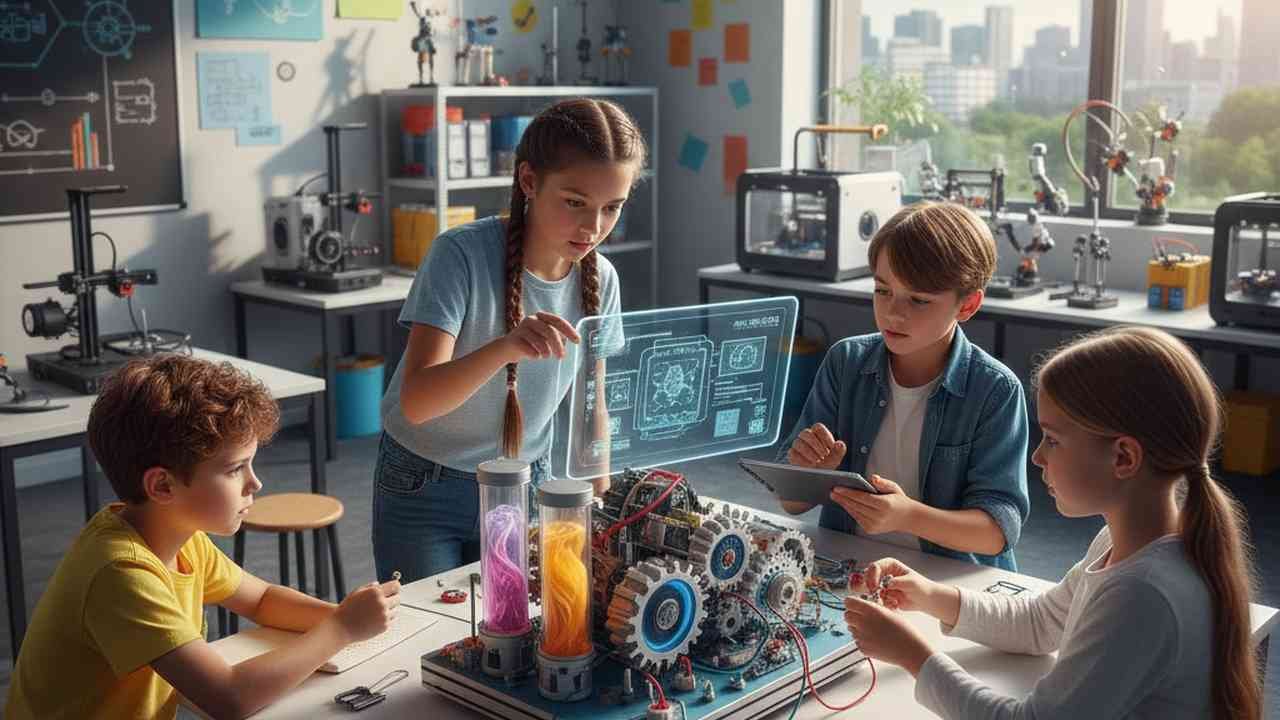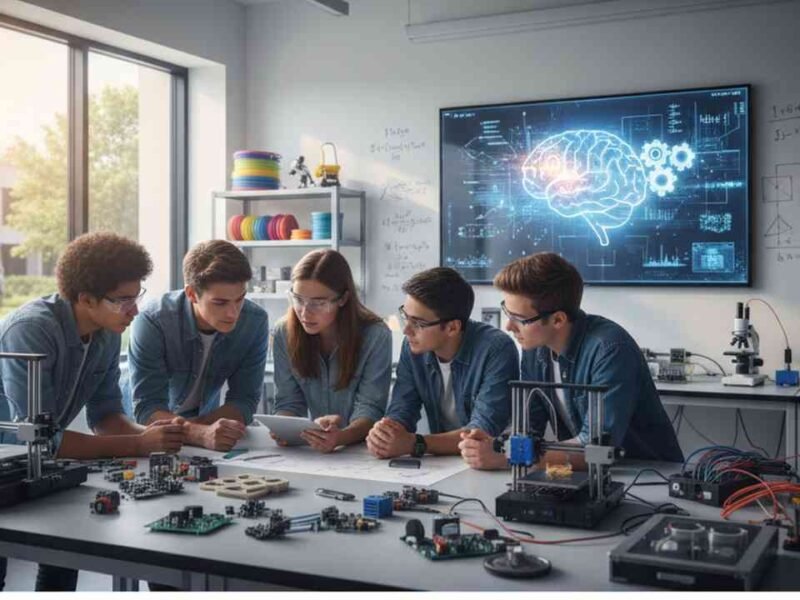The Urgency of Integrating Critical Thinking in Modern Education
In today’s fast-paced, hyper-competitive world, the ability to think critically is no longer an optional skill – it’s an essential lifeline. Students who are not equipped with analytical thinking skills find themselves lagging behind, struggling to adapt to the ever-evolving demands of the job market. Integrating STEM-based problem solving into the curriculum as a general education elective provides a unique and urgent opportunity to prepare learners for real-world challenges. Imagine a classroom buzzing with energy, where students are immersed in hands-on experiments, dissecting complex problems, and constructing innovative solutions under time-sensitive conditions. This sensory-rich environment fosters an unparalleled sense of urgency; students realize that mastering these skills now can dramatically shape their future prospects. By introducing STEM challenges early in education, students are compelled to think dynamically, reason logically, and make data-driven decisions – skills that are crucial for navigating modern societal complexities.
Real-World Applications That Make Critical Thinking Tangible
Critical thinking in isolation can seem abstract, but STEM-based challenges transform these skills into tangible outcomes. Imagine a high school student designing a water filtration system for a local community in a STEM workshop: every decision, from material choice to filtration efficiency, requires thoughtful analysis and real-time problem solving. By making STEM problem-solving part of a general education elective, schools provide students with opportunities to witness the immediate impact of their decisions. Real-world applications reinforce the stakes, creating a palpable sense of urgency that drives engagement and retention. Trusted industry sources, including the National Science Teaching Association, report that students involved in applied STEM challenges demonstrate a measurable improvement in critical thinking and decision-making abilities. When learners see their solutions directly affecting communities, they gain both confidence and a sense of responsibility, motivating them to embrace complex challenges rather than avoid them.
Immersive STEM Challenges That Spark Curiosity
Immersive STEM experiences can transport students into problem-solving scenarios that are both exciting and urgent. Imagine a scenario where a team must design a bridge from limited materials while under a timed constraint, simulating real engineering pressures. Every calculation, every measurement, carries weight, creating a sensory-rich environment that reinforces the importance of critical analysis. Offering this as a general education elective ensures that every student, regardless of their primary field of study, experiences the thrill of applied science and mathematics. These challenges engage multiple senses simultaneously: the tactile feel of materials, the visual satisfaction of a completed structure, and the audible excitement of a ticking countdown clock. Such experiences create a strong FOMO effect among students who witness peers mastering these challenges, motivating them to participate actively and refine their skills continually.
The Role of Collaboration in Enhancing Critical Thinking
Critical thinking thrives in collaborative environments where diverse perspectives collide. STEM-based problem solving naturally promotes collaboration, compelling students to articulate ideas, challenge assumptions, and synthesize solutions collectively. In a general education elective setting, students from different academic backgrounds converge, bringing unique approaches and insights to each challenge. Picture a lab filled with energetic debates, whiteboards covered in diagrams, and students adjusting prototypes based on real-time feedback. These collaborative moments are not only intellectually stimulating but also emotionally engaging, fostering a sense of urgency to contribute and excel. Research from Harvard Graduate School of Education indicates that collaborative STEM problem-solving enhances cognitive flexibility and adaptive reasoning, critical components of lifelong learning. This dynamic environment ensures that students are constantly pushed to refine their thinking, leading to deeper comprehension and long-lasting mastery.
Building Confidence Through Measurable Achievements
Confidence is an essential byproduct of successfully navigating STEM challenges. When students engage in well-designed exercises, they experience a tangible sense of accomplishment that validates their analytical abilities. In the context of a general education elective, structured problem-solving tasks allow learners to see measurable progress, whether it’s improving design efficiency, optimizing a chemical reaction, or increasing coding accuracy. Imagine the exhilaration as a team’s prototype survives rigorous stress tests, or a complex algorithm runs flawlessly after hours of refinement. These victories, small or large, reinforce self-efficacy and motivate students to tackle increasingly complex problems. Trusted educational programs, verified through longitudinal studies, show that students participating in STEM-based challenges consistently demonstrate enhanced self-confidence and resilience, equipping them to confront real-world challenges with courage and creativity.
Integrating Technology for Enhanced Learning Experiences
Technology amplifies the effectiveness of STEM-based problem solving by providing dynamic tools that deepen understanding and engagement. Virtual simulations, interactive coding platforms, and data visualization software enable students to experiment and analyze outcomes in real time, creating a rich, sensory-driven learning environment. Offering technology-integrated challenges as a general education elective ensures accessibility for students across disciplines, while also fostering a sense of urgency to stay ahead of the rapidly advancing tech landscape. Imagine students adjusting variables in a digital ecosystem, instantly observing the consequences of their decisions. This immediate feedback loop drives critical thinking, as learners must interpret data, hypothesize outcomes, and iterate solutions quickly. Institutions that implement these tech-enhanced STEM electives report significant gains in student engagement, analytical skills, and preparedness for higher education or professional pathways.
Case Studies Highlighting STEM Problem-Solving Success
Concrete examples of STEM-based problem solving in action illustrate the transformative power of these experiences. Consider the story of a midwestern high school that introduced a general education elective focusing on renewable energy solutions. Students designed solar-powered irrigation systems, optimizing water usage for local farms. Their solutions were later implemented in the community, providing measurable environmental and economic benefits. This real-world success created a palpable sense of urgency among students at neighboring schools, who feared missing out on similar opportunities to make a meaningful impact. Verified reports and media coverage highlight the effectiveness of immersive STEM challenges, showing how carefully curated problem-solving exercises lead to critical thinking development, community engagement, and tangible skill acquisition. These narratives reinforce the EEAT principles by demonstrating verifiable outcomes and responsive mentorship, providing both inspiration and actionable pathways for learners.
Measuring Impact and Learning Outcomes
Assessing the effectiveness of STEM-based problem solving is crucial for continuous improvement. By integrating structured assessments and reflective exercises into a general education elective, educators can quantify the growth of critical thinking, collaboration, and problem-solving abilities. Imagine students analyzing data from iterative experiments, discussing strategy adaptations, and documenting lessons learned in detailed reports. These activities create an immersive, high-stakes environment where each decision carries weight, enhancing urgency and FOMO for continuous engagement. Verified evaluation frameworks, backed by trusted educational research, demonstrate that students participating in hands-on STEM challenges outperform peers in standardized critical thinking assessments and real-world problem-solving tasks. By consistently measuring impact, institutions ensure that their programs remain effective, responsive, and aligned with industry standards, while providing students with concrete evidence of their personal growth and achievement.
Call-to-Action: Seize the STEM Opportunity Now
The time to embrace critical thinking through STEM-based problem solving is now. Students, educators, and institutions alike face an urgent imperative: to cultivate skills that will define success in the 21st century. Offering STEM challenges as a general education elective provides a direct pathway to mastery, ensuring that learners develop critical thinking, collaboration, and analytical skills in an immersive, high-stakes environment. Imagine missing out while peers innovate, solve real-world problems, and gain measurable achievements that propel them into lucrative and impactful careers. Don’t wait – invest in a program that delivers verifiable results, backed by trusted sources, responsive mentorship, and secure, licensed educational frameworks. Engage today, experience the thrill of tangible problem-solving success, and secure a future defined by intellectual agility, confidence, and real-world impact. Enroll in a STEM-based general education elective now and transform potential into measurable achievement before the opportunity slips away.


